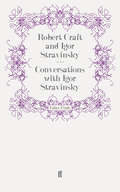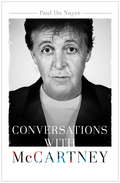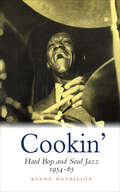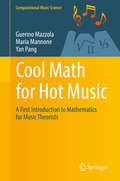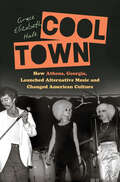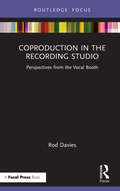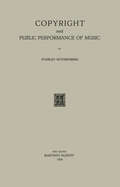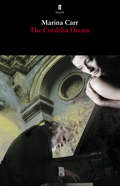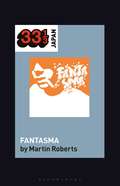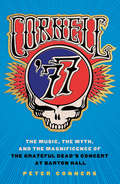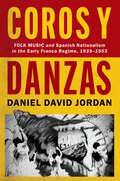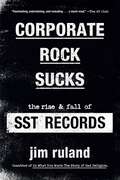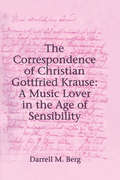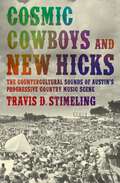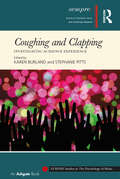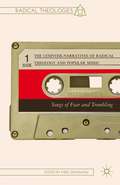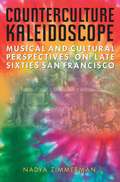- Table View
- List View
Conversations with Igor Stravinsky
by Robert CraftConversations with Igor Stravinsky is the first of the celebrated series of conversation books in which Stravinsky, prompted by Robert Craft, reviewed his long and remarkable life. The composer brings the Imperial Russia of his childhood vividly into focus, at the same time scanning what were at the time the brave new horizons of Boulez and Stockhausen with extraordinary acuity.Stravinsky answers searching questions about his musical development and recalls his association with Diaghilev and the Russian Ballet. There are sympathetic and extraordinarily illuminating reminiscences of such composers as Debussy and Ravel ('the only musicians who immediately understood Le Sacre du Printemps'), while mischievous squibs are directed at others, most notably perhaps against Richard Strauss, all of whose operas Stravinsky wished 'to admit ... to whichever purgatory punishes triumphant banality'.The conversations are by no means confined to musical subjects, ranging uninhibitedly across all the arts: Stravinsky gives unforgettable sketches of Ibsen, Rodin, Proust, Giacometti, Dylan Thomas and T S Eliot.'The conversations between Igor Stravinsky and Robert Craft are unique in musical history. The penetration of Craft's questions and the patience and detail of Stravinsky's answers combine to produce an intimate picture of a man who has sometimes puzzled, often delighted, and always intrigued ...' The Sunday Times
Conversations with McCartney
by Paul Du NoyerIn June 1989, Paul Du Noyer was contacted by Paul McCartney's office in London and asked to interview the star as they had met once before and enjoyed a good raport. In the years that followed, Paul Du Noyer continued to meet, interview and work for Paul McCartney on a regular basis, producing magazine articles, tour programmes, album liner notes, press materials and website editorial. It's likely that Du Noyer has spent more hours in formal, recorded conversation with McCartney than any other writer. Conversations with McCartney is the culmination of Du Noyer's long association with McCartney and his music. It draws from their interview sessions across 35 years, coupling McCartney's own, candid thoughts with his observations and analysis.
Cookin': Hard Bop and Soul Jazz 1954-65
by Kenny MathiesonFollowing on from Giant Steps, comes the second instalment in Kenny Mathieson's series of jazz histories. Cookin' examines the birth and development of two of the key jazz styles of the post-war era, hard bop and its related offshoot, soul jazz. Hard bop was the most exciting jazz style of its day, and remains at the core of the modern jazz mainstream even now. It drew on the twin poles of bebop and the blues for its foundation, spiced up with gospel, Latin and rhythm and blues influences. The book looks at the founding fathers of the form, Art Blakey and Horace Silver, and goes on to trace the music through its peak decade.
Cool Math for Hot Music: A First Introduction to Mathematics for Music Theorists (Computational Music Science)
by Guerino Mazzola Maria Mannone Yan PangThis textbook is a first introduction to mathematics for music theorists, covering basic topics such as sets and functions, universal properties, numbers and recursion, graphs, groups, rings, matrices and modules, continuity, calculus, and gestures. It approaches these abstract themes in a new way: Every concept or theorem is motivated and illustrated by examples from music theory (such as harmony, counterpoint, tuning), composition (e.g., classical combinatorics, dodecaphonic composition), and gestural performance. The book includes many illustrations, and exercises with solutions.
Cool Town: How Athens, Georgia, Launched Alternative Music and Changed American Culture (A Ferris and Ferris Book)
by Grace Elizabeth HaleIn the summer of 1978, the B-52's conquered the New York underground. A year later, the band's self-titled debut album burst onto the Billboard charts, capturing the imagination of fans and music critics worldwide. The fact that the group had formed in the sleepy southern college town of Athens, Georgia, only increased the fascination. Soon, more Athens bands followed the B-52's into the vanguard of the new American music that would come to be known as "alternative," including R.E.M., who catapulted over the course of the 1980s to the top of the musical mainstream. As acts like the B-52's, R.E.M., and Pylon drew the eyes of New York tastemakers southward, they discovered in Athens an unexpected mecca of music, experimental art, DIY spirit, and progressive politics--a creative underground as vibrant as any to be found in the country's major cities. In Athens in the eighties, if you were young and willing to live without much money, anything seemed possible. Cool Town reveals the passion, vitality, and enduring significance of a bohemian scene that became a model for others to follow. Grace Elizabeth Hale experienced the Athens scene as a student, small-business owner, and band member. Blending personal recollection with a historian's eye, she reconstructs the networks of bands, artists, and friends that drew on the things at hand to make a new art of the possible, transforming American culture along the way. In a story full of music and brimming with hope, Hale shows how an unlikely cast of characters in an unlikely place made a surprising and beautiful new world.
Coproduction in the Recording Studio: Perspectives from the Vocal Booth
by Rod DaviesCoproduction in the Recording Studio: Perspectives from the Vocal Booth details how recording studio environments affect performance in the vocal booth. Drawing on interviews with professional session singers, this book considers sociocultural and sociotechnical theory, the modern home studio space, as well as isolation and self-recording in light of the COVID-19 pandemic. This is cutting-edge reading for advanced undergraduates, scholars and professionals working in the disciplines of recording studio production, vocal performance, audio engineering and music technology.
Coproduction in the Recording Studio: Perspectives from the Vocal Booth
by Rod DaviesCoproduction in the Recording Studio: Perspectives from the Vocal Booth details how recording studio environments affect performance in the vocal booth. Drawing on interviews with professional session singers, this book considers sociocultural and sociotechnical theory, the modern home studio space, as well as isolation and self-recording in light of the COVID-19 pandemic. This is cutting-edge reading for advanced undergraduates, scholars and professionals working in the disciplines of recording studio production, vocal performance, audio engineering and music technology.
Copyright and Public Performance of Music
by Stanley RothenbergThere have been many notable descriptions of music but perhaps one of the most apt from the viewpoint of law and commerce was Ian Hay's statement, "Music is about the most vulnerable piece of property that a man can bring into the world, especially today. " With the increased use of music brought about by technological advances, such as radio, sound films and tele vision, and the concomitant decrease in the sale of sheet music and phonograph records, the need for writers and publishers of music to share in the revenue from public performances became urgent. With this urgency the author's rights in the public per formance of his music became the subject of much literature and litigation which continues to this day. The purpose of this book is to present a clear picture of this much written and litigated about subject: the au'thor's right in the public performance of his music. In order to do this we must indicate not only the nature of the right but also how it is exer cised for it should be evident that with performances taking place throughout the world and in a multitude of ways, the exercise of the right by an individual author or publisher would present insurmountable problems.
The Cordelia Dream: On Raftery's Hill; Ariel; Woman And Scarecrow; The Cordelia Dream; Marble
by Marina CarrHaunted by her dream of Cordelia and Lear, a woman confronts an elderly man, her lifelong antagonist and rival. During their passionate altercation he dismisses her success as a composer and demands she make the ultimate sacrifice: for him to flourish she, his protégée, must be silent. Five years later, she returns for a final and devastating encounter.Marina Carr's The Cordelia Dream premiered in December 2008 at Wilton's Music Hall, London, in a production by the Royal Shakespeare Company.
Cornelius's Fantasma (33 1/3 Japan)
by Martin RobertsIn Tokyo in the early 1990s, an indie band called Flipper's Guitar was at the forefront of a new wave in Japanese popular music known as Shibuya-kei. The band's founder, Keigo Oyamada, would go on to produce, under the name Cornelius, a series of albums that are among the most innovative in Japanese popular music of the past two decades. Oyamada's third album under his Cornelius alter-ego, Fantasma (1997), played a key role in putting J-pop on the world map for Western music fans, and Oyamada himself is today one of the most respected figures in the Japanese music industry. This book tells the story of Fantasma's emergence from the Shibuya-kei scene and considers the wider impact of Oyamada's work both internationally and on Japanese popular music today.33 1/3 Global, a series related to but independent from 33 1/3, takes the format of the original series of short, music-based books and brings the focus to music throughout the world. With initial volumes focusing on Japanese and Brazilian music, the series will also include volumes on the popular music of Australia/Oceania, Europe, Africa, the Middle East, and more.
Cornelius's Fantasma (33 1/3 Japan)
by Martin RobertsIn Tokyo in the early 1990s, an indie band called Flipper's Guitar was at the forefront of a new wave in Japanese popular music known as Shibuya-kei. The band's founder, Keigo Oyamada, would go on to produce, under the name Cornelius, a series of albums that are among the most innovative in Japanese popular music of the past two decades. Oyamada's third album under his Cornelius alter-ego, Fantasma (1997), played a key role in putting J-pop on the world map for Western music fans, and Oyamada himself is today one of the most respected figures in the Japanese music industry. This book tells the story of Fantasma's emergence from the Shibuya-kei scene and considers the wider impact of Oyamada's work both internationally and on Japanese popular music today.33 1/3 Global, a series related to but independent from 33 1/3, takes the format of the original series of short, music-based books and brings the focus to music throughout the world. With initial volumes focusing on Japanese and Brazilian music, the series will also include volumes on the popular music of Australia/Oceania, Europe, Africa, the Middle East, and more.
Cornell '77: The Music, the Myth, and the Magnificence of the Grateful Dead's Concert at Barton Hall
by Peter ConnersOn May 8, 1977, at Barton Hall, on the Cornell University campus, in front of 8,500 eager fans, the Grateful Dead played a show so significant that the Library of Congress inducted it into the National Recording Registry. The band had just released Terrapin Station and was still finding its feet after an extended hiatus. In 1977, the Grateful Dead reached a musical peak, and their East Coast spring tour featured an exceptional string of performances, including the one at Cornell. Many Deadheads claim that the quality of the live recording of the show made by Betty Cantor-Jackson (a member of the crew) elevated its importance. Once those recordings—referred to as "Betty Boards"—began to circulate among Deadheads, the reputation of the Cornell ’77 show grew exponentially. With time the show at Barton Hall acquired legendary status in the community of Deadheads and audiophiles.Rooted in dozens of interviews—including a conversation with Betty Cantor-Jackson about her recording—and accompanied by a dazzling selection of never-before-seen concert photographs, Cornell ’77 is about far more than just a single Grateful Dead concert. It is a social and cultural history of one of America’s most enduring and iconic musical acts, their devoted fans, and a group of Cornell students whose passion for music drove them to bring the Dead to Barton Hall. Peter Conners has intimate knowledge of the fan culture surrounding the Dead, and his expertise brings the show to life. He leads readers through a song-by-song analysis of the performance, from "New Minglewood Blues" to "One More Saturday Night," and conveys why, forty years later, Cornell ’77 is still considered a touchstone in the history of the band.As Conners notes in his Prologue: "You will hear from Deadheads who went to the show. You will hear from non-Deadhead Cornell graduates who were responsible for putting on the show in the first place. You will hear from record executives, academics, scholars, Dead family members, tapers, traders, and trolls. You will hear from those who still live the Grateful Dead every day. You will hear from those who would rather keep their Grateful Dead passions private for reasons both personal and professional. You will hear stories about the early days of being a Deadhead and what it was like to attend, and perhaps record, those early shows, including Cornell ’77."
Coros y Danzas: Folk Music and Spanish Nationalism in the Early Franco Regime (1939-1953) (CURRENTS IN LATIN AMER AND IBERIAN MUSIC)
by Daniel David JordanCoros y Danzas explores how women of the early Franco regime adapted musical folklore and Spanish nationalism according to different political circumstances. Author Daniel David Jordan focuses on the end of the Spanish Civil War until the Pact of Madrid with the United States-a period where Spain transformed itself from a supporter of Nazi Germany to a faithful ally of the Western Bloc. The Sección Femenina of the fascist Falange party officially represented the regime's views and policies on female gender roles. Sending their instructoras de música to remote villages throughout the nation's diverse cultural and linguistic regions to select, transcribe, and compose songs and dances, they were portrayed as the keepers of Spanish folk music. Through their Music Department, these women shaped traditional Spanish songs and dances to promote ideas of Catholic morality throughout the nation's culturally diverse regions, helped legitimize colonial involvement in Spain's African territories, and formed political ties with the Allied powers after World War II. The Sección Femenina was never simply a one-sided mouthpiece of the dictatorship's nationalist, Catholic underpinnings. Despite the Franco regime's patriarchal nature, many members were highly independent, negotiating with local cultural elites and foreign political diplomats to further their own careers and personal philosophies. Drawing from literature on cultural diplomacy and nation-building, Coros y Danzas proposes how the Sección Femenina's definition of Spanish cultural and racial purity was never monolithic, but a malleable concept that was nuanced depending on geographical and social contexts in which its members were operating.
Coros y Danzas: Folk Music and Spanish Nationalism in the Early Franco Regime (1939-1953) (CURRENTS IN LATIN AMER AND IBERIAN MUSIC)
by Daniel David JordanCoros y Danzas explores how women of the early Franco regime adapted musical folklore and Spanish nationalism according to different political circumstances. Author Daniel David Jordan focuses on the end of the Spanish Civil War until the Pact of Madrid with the United States-a period where Spain transformed itself from a supporter of Nazi Germany to a faithful ally of the Western Bloc. The Sección Femenina of the fascist Falange party officially represented the regime's views and policies on female gender roles. Sending their instructoras de música to remote villages throughout the nation's diverse cultural and linguistic regions to select, transcribe, and compose songs and dances, they were portrayed as the keepers of Spanish folk music. Through their Music Department, these women shaped traditional Spanish songs and dances to promote ideas of Catholic morality throughout the nation's culturally diverse regions, helped legitimize colonial involvement in Spain's African territories, and formed political ties with the Allied powers after World War II. The Sección Femenina was never simply a one-sided mouthpiece of the dictatorship's nationalist, Catholic underpinnings. Despite the Franco regime's patriarchal nature, many members were highly independent, negotiating with local cultural elites and foreign political diplomats to further their own careers and personal philosophies. Drawing from literature on cultural diplomacy and nation-building, Coros y Danzas proposes how the Sección Femenina's definition of Spanish cultural and racial purity was never monolithic, but a malleable concept that was nuanced depending on geographical and social contexts in which its members were operating.
Corporate Rock Sucks: The Rise and Fall of SST Records
by Jim RulandA no-holds-barred narrative history of the iconic label that brought the world Black Flag, Hüsker Dü, Sonic Youth, Soundgarden, and more, by the co-author of Do What You Want and My Damage.Greg Ginn started SST Records in the sleepy beach town of Hermosa Beach, CA, to supply ham radio enthusiasts with tuners and transmitters. But when Ginn wanted to launch his band, Black Flag, no one was willing to take them on. Determined to bring his music to the masses, Ginn turned SST into a record label. On the back of Black Flag&’s relentless touring, guerilla marketing, and refusal to back down, SST became the sound of the underground.In Corporate Rock Sucks, music journalist Jim Ruland relays the unvarnished story of SST Records, from its remarkable rise in notoriety to its infamous downfall. With records by Black Flag, Minutemen, Hüsker Dü, Bad Brains, Sonic Youth, Dinosaur Jr, Screaming Trees, Soundgarden, and scores of obscure yet influential bands, SST was the most popular indie label by the mid-80s--until a tsunami of legal jeopardy, financial peril, and dysfunctional management brought the empire tumbling down. Throughout this investigative deep-dive, Ruland leads readers through SST&’s tumultuous history and epic catalog.Featuring never-before-seen interviews with the label's former employees, as well as musicians, managers, producers, photographers, video directors, and label heads, Corporate Rock Sucks presents a definitive narrative history of the &’80s punk and alternative rock scenes, and shows how the music industry was changed forever.
The Correspondence of Christian Gottfried Krause: A Music Lover in the Age of Sensibility
by Darrell M. BergThe fascinating correspondence of the Berlin lawyer and musician Christian Gottfried Krause is an important document reflecting the trends and developments in aesthetics, music theory and music making in the Prussian capital during the reign of Frederick the Great. Krause's letters shed light on the rise of a bourgeois music culture, which during h
The Correspondence of Christian Gottfried Krause: A Music Lover in the Age of Sensibility
by Darrell M. BergThe fascinating correspondence of the Berlin lawyer and musician Christian Gottfried Krause is an important document reflecting the trends and developments in aesthetics, music theory and music making in the Prussian capital during the reign of Frederick the Great. Krause's letters shed light on the rise of a bourgeois music culture, which during h
Cosmic Cowboys and New Hicks: The Countercultural Sounds of Austin's Progressive Country Music Scene
by Travis D. StimelingCountry music of late 1960s and early 1970s was a powerful symbol of staunch conservative resistance to the flowering hippie counterculture. But in 1972, the city of Austin, Texas became host to a growing community of musicians, entrepreneurs, journalists, and fans who saw country music as a part of their collective heritage and sought to reclaim it for their own progressive scene. These children of the Cold War, post-World War II suburban migration, and the Baby Boom escaped the socially conservative world their parents had created, to instead create for themselves an idyllic rural Texan utopia. Progressive country music--a hybrid of country music and rock--played out the contradictions at work among the residents of the growing Austin community: at once firmly grounded in the conservative Texan culture in which they had been raised and profoundly affected by the current hippie counterculture. In Cosmic Cowboys and New Hicks: The Countercultural Sounds of Austin's Progressive Country Music Scene, Travis Stimeling connects the local Austin culture and the progressive music that became its trademark. He presents a colorful range of evidence, from behavior and dress, to newspaper articles, to personal interviews of musicians as diverse as Willie Nelson, Jerry Jeff Walker, and Doug Sahm. Along the way, Stimeling uncovers parodies of the cosmic cowboy image that reinforce the longing for a more peaceful way of life, but that also recognize an awareness of the muddled, conflicted nature of this counterculture identity. Cosmic Cowboys and New Hicks brings new insight into the inner workings of Austin's progressive country music scene -- by bringing the music and musicians brilliantly to life. This book will appeal to students and scholars of popular music studies, musicology and ethnomusicology, sociology, cultural studies, folklore, American studies, and cultural geography; the lucid prose and interviews will also make the book attractive to fans of the genre and artists discussed within. Austin residents past and present, as well as anyone with an interest in the development of progressive music or today's 'alt.country' movement will find Cosmic Cowboys and New Hicks an informative, engaging resource.
Cosmic Cowboys and New Hicks: The Countercultural Sounds of Austin's Progressive Country Music Scene
by Travis D. StimelingCountry music of late 1960s and early 1970s was a powerful symbol of staunch conservative resistance to the flowering hippie counterculture. But in 1972, the city of Austin, Texas became host to a growing community of musicians, entrepreneurs, journalists, and fans who saw country music as a part of their collective heritage and sought to reclaim it for their own progressive scene. These children of the Cold War, post-World War II suburban migration, and the Baby Boom escaped the socially conservative world their parents had created, to instead create for themselves an idyllic rural Texan utopia. Progressive country music--a hybrid of country music and rock--played out the contradictions at work among the residents of the growing Austin community: at once firmly grounded in the conservative Texan culture in which they had been raised and profoundly affected by the current hippie counterculture. In Cosmic Cowboys and New Hicks: The Countercultural Sounds of Austin's Progressive Country Music Scene, Travis Stimeling connects the local Austin culture and the progressive music that became its trademark. He presents a colorful range of evidence, from behavior and dress, to newspaper articles, to personal interviews of musicians as diverse as Willie Nelson, Jerry Jeff Walker, and Doug Sahm. Along the way, Stimeling uncovers parodies of the cosmic cowboy image that reinforce the longing for a more peaceful way of life, but that also recognize an awareness of the muddled, conflicted nature of this counterculture identity. Cosmic Cowboys and New Hicks brings new insight into the inner workings of Austin's progressive country music scene -- by bringing the music and musicians brilliantly to life. This book will appeal to students and scholars of popular music studies, musicology and ethnomusicology, sociology, cultural studies, folklore, American studies, and cultural geography; the lucid prose and interviews will also make the book attractive to fans of the genre and artists discussed within. Austin residents past and present, as well as anyone with an interest in the development of progressive music or today's 'alt.country' movement will find Cosmic Cowboys and New Hicks an informative, engaging resource.
Coughing and Clapping: Investigating Audience Experience (SEMPRE Studies in The Psychology of Music)
by Karen Burland Stephanie PittsCoughing and Clapping: Investigating Audience Experience explores the processes and experiences of attending live music events from the initial decision to attend through to audience responses and memories of a performance after it has happened. The book brings together international researchers who consider the experience of being an audience member from a range of theoretical and empirical perspectives. Whether enjoying a drink at a jazz gig, tweeting at a pop concert or suppressing a cough at a classical recital, audience experience is affected by motivation, performance quality, social atmosphere and group and personal identity. Drawing on the implications of these experiences and attitudes, the authors consider the question of what makes an audience, and argue convincingly for the practical and academic value of that question.
Coughing and Clapping: Investigating Audience Experience (SEMPRE Studies in The Psychology of Music)
by Karen Burland Stephanie PittsCoughing and Clapping: Investigating Audience Experience explores the processes and experiences of attending live music events from the initial decision to attend through to audience responses and memories of a performance after it has happened. The book brings together international researchers who consider the experience of being an audience member from a range of theoretical and empirical perspectives. Whether enjoying a drink at a jazz gig, tweeting at a pop concert or suppressing a cough at a classical recital, audience experience is affected by motivation, performance quality, social atmosphere and group and personal identity. Drawing on the implications of these experiences and attitudes, the authors consider the question of what makes an audience, and argue convincingly for the practical and academic value of that question.
The Counter-Narratives of Radical Theology and Popular Music: Songs of Fear and Trembling (Radical Theologies and Philosophies)
by Mike GrimshawIn this unique collection, theologians born and formed during the Cold War offer their insights and perspectives on theological relationships with such musical artists and groups as Joy Division, U2, Nick Cave, and John Coltrane. These essays demonstrate that one's personal music preferences can inform and influence professional interests.
Counterculture Kaleidoscope: Musical and Cultural Perspectives on Late Sixties San Francisco
by Nadya ZimmermanForty years after the fact, 1960s counterculture---personified by hippies, protest, and the Summer of Love---basks in a nostalgic glow in the popular imagination as a turning point in modern American history and the end of the age of innocence. Yet, while the era has come to be synonymous with rebellion and opposition, its truth is much more complex. In a bold reconsideration of the late sixties San Francisco counterculture movement, Counterculture Kaleidoscope takes a close look at the cultural and musical practices of that era. Addressing the conventional wisdom that the movement was grounded in rebellion and opposition, the book exposes two myths: first, that the counterculture was an organized social and political movement of progressives with a shared agenda who opposed the mainstream (dubbed "hippies"); and second, that the counterculture was an innocent entity hijacked by commercialism and transformed over time into a vehicle of so-called "hip consumerism." Seeking an alternative to the now common narrative, Nadya Zimmerman examines primary source material including music, artwork, popular literature, personal narratives, and firsthand historical accounts. She reveals that the San Francisco counterculture wasn't interested in commitments to causes and made no association with divisive issues---that it embraced everything in general and nothing in particular. "Astute and accessible, Counterculture Kaleidoscope provides thought-provoking insights into the historical, cultural and social context of the San Francisco counter-culture and its music scene, including discussions of Vietnam and student protest, the Haight-Ashbury Diggers, the Grateful Dead, Led Zeppelin, Altamont, and Charlie Manson. A must for students and scholars of socio-musical activity and for all of us to whom music matters." ---Sheila Whiteley, author of The Space Between the Notes: Rock and the Counter-Culture and Too Much Too Young: Popular Music, Age and Gender "The hippie counterculture has never garnered the scholarly attention accorded the new left and the black freedom struggle. Overviews of the period ritualistically mention it as part and parcel of that apparently incandescent era---the Sixties---but rarely capture its distinctiveness. Counterculture Kaleidoscope is a timely and provocative intervention in Sixties scholarship that significantly deepens our understanding of this important but understudied phenomenon." —Alice Echols, Associate Professor, University of Southern California, and author of Scars of Sweet Paradise: The Life and Times of Janis Joplin
